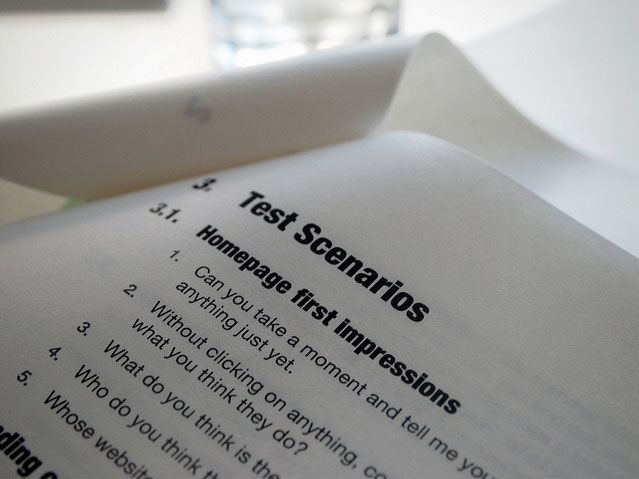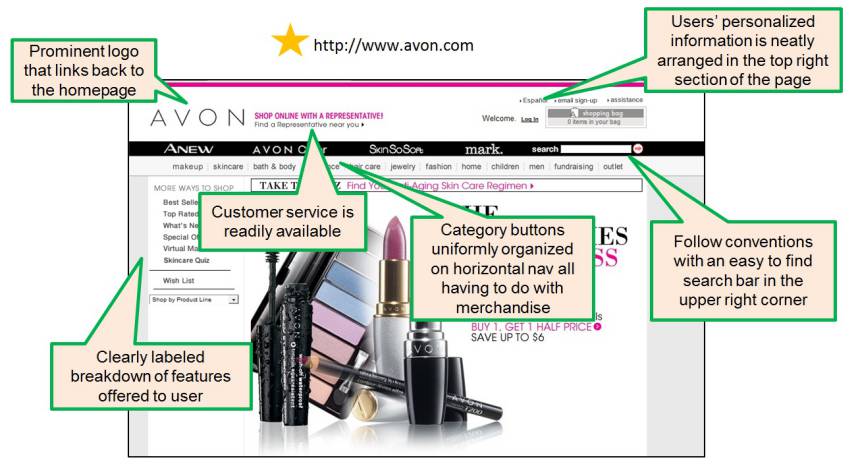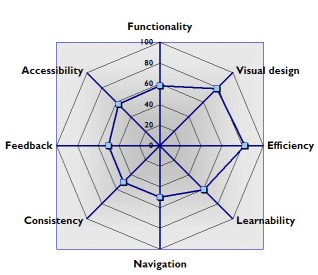Yes, the ideal situation when you want to conduct a usability review is to use the services of a usability expert. But… that’s not always within budget or an option that can be put into play in the right timeframe to keep a product’s development on track.
So, let’s take a look at how anyone can conduct a usability review using a simple process instead.
What is a Usability Review?
In essence, it’s taking a system and comparing it to a list of “best practice standards” for usability. They tend to fall into two categories – scenario-based reviews and heuristic reviews. The former is walking through a product based on a scenario or scenarios that users are likely to face. For example, get on the website and buy a camera. The latter, involves carrying out tests against a list of heuristics (those best practice standards).
In practice the two tend to end up blurred into one as they can be most effective when used together rather than separately.
Why Use a Usability Review?
There are some benefits to using a usability review on a product. They are fast to execute and don’t cost a lot of money (you just need someone to design and execute the test). You don’t need to be an expert to carry out a usability review (though the more experience you have – the better the results tend to be). You can broaden the scope a usability review to test a lot of functionality; something you often can’t do with real users because of time constraints.
Notes of Caution for Usability Reviews
You also need to be careful about using usability reviews – they don’t tell you how usable your product actually is, they just offer a theoretical idea of its usability. Only your users can confirm that. It’s also easy to miss something when you define the scope of the tests. Because usability reviews tend to depend on the opinion of one person – the results can be misleading too.
A Usability Review Process That Anyone Can Carry Out
This is not the only way to carry out a usability review; however, it is a simple and straightforward method if you’ve not done a usability review before. Over time, as you become more confident, you might want to explore other methods and ideas too.
Step 1 – Define the Scenarios to Test
A scenario is simply something that you user would do with your product. For example, if you run a retail outlet online – it might be to make a purchase on the store. If you run an information site – it might be to find a specific piece or pieces of information.
You’ll want to define the most common scenarios that your users face and any new or previously untested scenarios too. If you have limited time to do the review in – prioritize scenarios by their level of importance. E.g. It’s more important that the sales process on a retail store works than the FAQ process works (though eventually, it’s important that they both work) because if your customer can’t buy from you – the whole product is pointless.
Try to answer these questions when developing scenarios:
Who is the user? Are they familiar with the system? Come up with a light-weight (rather than in depth) persona that can guide how the user might behave.
What is the user trying to get done? What task(s) will they need to perform?
Why are they using the system? What do they expect to achieve with the system?
Where will they be using the system? What browser/hardware will they access the system with?
The scope of the review will depend on the complexity of the product and what you really need to test. Ideally, you want to keep the number of personas to a minimum and recycle them wherever possible for multiple scenarios (to save duplication of effort).

Author/Copyright holder: Unknown. Copyright terms and licence: Unknown Img source
Step 2 – Carry Out a Walkthrough of Each of Your Scenarios
This step is pretty simple, now that you have your scenarios – it’s time to try and execute those scenarios and see if you can walk a mile in the shoes of a user.
Now… this is why usability reviews aren’t fool-proof. It’s impossible for you to predict how users will actually behave but you can take a guesstimate by posing these questions for each step of your scenario:
Is it clear what the user should do? That is – is there enough information on screen to make it obvious how the user can conduct the task?
Is it clear how the user should behave? OK, it’s clear how to get started but is it clear how they should go through the whole process?
Is there feedback to let the user know they got things right? Is there a clear end point in the process? Does the user know if they followed the instructions correctly?
You run through the walkthroughs to the point where either you are sure the user will have done what was needed or walked away because they couldn’t do what was needed.
Recording this process is easy. Use screenshots with the questions you asked and write on them.

Author/Copyright holder: Evoc Insights. Copyright terms and licence: All rights reserved Img source
Step 3 – Score the Walkthrough
The scoring mechanism you develop is up to you. Many UX teams will base their scores on the classic 10 usability heuristics developed by Nielsen but many others will develop their own tailored approach. Scoring isn’t as vital as fixing the issues but it is a good way to give other people in your business an idea of how the usability review performed.
It will take a little experimentation to work out which aspects work for your business and which don’t. Your first time round will probably lead to an overly complex or overly simple rating – don’t worry about that – you can improve the scoring process until you’re happy with it.

Author/Copyright holder: Learning Emergence. Copyright terms and licence: All righs reserved Img source
Summary
Conducting a usability review isn’t all that difficult. It’s a technique best employed for early evaluation of designs before you let users loose on them. Don’t forget that the results of a usability review are indicative of issues rather than a guarantee of them. You still need to test with users at some point or another.
Header Image: Author/Copyright holder: UX Centered. Copyright terms and licence: All rights reserved. Img











